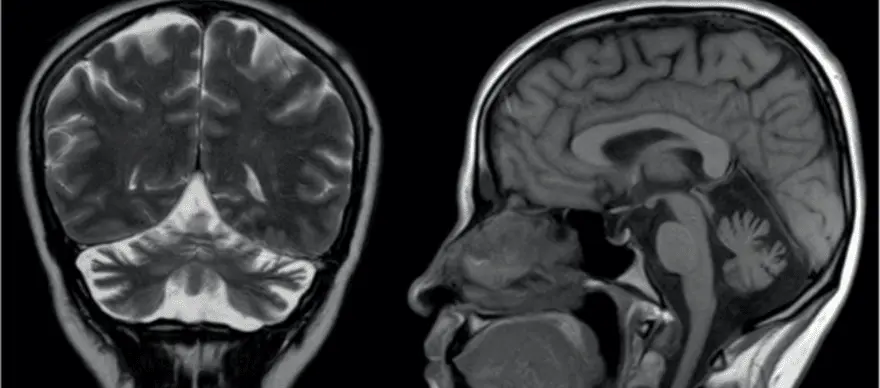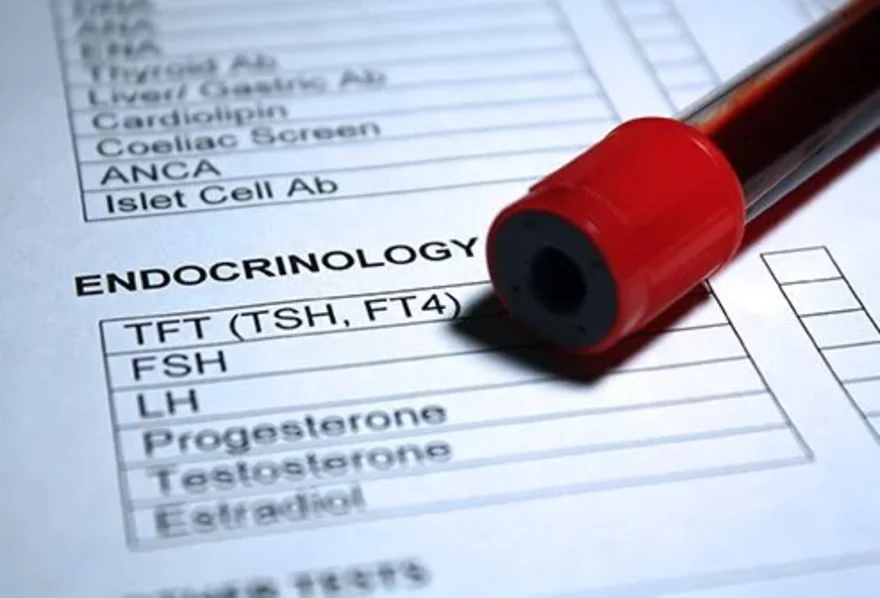Latest Blogs
Managing Itching & Itchy Skin (Pruritus): Causes, Treatment, and Home Remedies
What is itching? Itching, also known as pruritus, is an unpleasant sensation that prompts the desire to scratch. It can affect the skin or mucous membranes and is often a symptom of an underlying issue rather than a condition itself. Itching can vary in intensity and duration, ranging from mild and temporary to chronic and debilitating. What are the most common causes of itching? Itching can stem from a multitude of factors, with some of the most common causes of itchy skin including skin conditions like eczema, psoriasis, and dermatitis. Allergic reactions to substances such as chemicals, plants, or certain foods can also cause itching. Insect bites, dry skin, and excessive sweating are frequent triggers. Additionally, systemic conditions like liver or kidney diseases, thyroid disorders, and diabetes may manifest with itching as a symptom. Psychological factors like stress and anxiety can exacerbate itching sensations. Can stress worsen itching symptoms? Yes, stress can exacerbate itching symptoms. Psychological factors like stress and anxiety can trigger or intensify itching sensations through complex physiological pathways. Stress prompts the release of neurotransmitters and hormones that can stimulate nerve endings in the skin, leading to heightened itch perception. Moreover, stress weakens the body's immune system, making individuals more susceptible to inflammatory skin conditions like eczema or psoriasis, which are often accompanied by itching. What are the types of itching? There are various itching types characterised by their location, duration, and underlying causes. Itching, or pruritus, manifests in various forms depending on its underlying causes and characteristics: Localised Itching: This type affects specific areas of the body and is often attributed to external factors such as insect bites, contact with irritants, or localised skin conditions like eczema or dermatitis. Generalised Itching: Generalised itching involves the entire body and can be a symptom of systemic conditions such as liver disease, kidney failure, or certain infections like scabies or chickenpox. Neuropathic Itching: Neuropathic itching arises from dysfunction or damage to the nervous system, leading to abnormal signaling of itch sensations. It can occur with conditions like neuropathy, multiple sclerosis, or spinal cord injuries. Psychogenic Itching: Psychogenic itching is driven by psychological factors such as stress, anxiety, or obsessive-compulsive disorders, without any identifiable physical cause. Home remedies for itchy skin Several home remedies for itchy skin can give you relief without the need for medication. Aloe vera gel or calamine lotion can be applied topically to soothe itching and reduce inflammation. Taking a lukewarm bath with colloidal oatmeal or baking soda can alleviate itching and provide relief. Incorporating foods rich in omega-3 fatty acids, such as salmon or flaxseeds, into your diet can help reduce inflammation from within. Regularly moisturise your skin to prevent dryness, which can exacerbate itching. Avoid scratching, as it can further irritate the skin and worsen itching. Wear loose-fitting clothing made of breathable fabrics can help prevent further irritation and promote healing of itchy skin. However, it's essential to consult a healthcare professional if itching persists or worsens despite home remedies. What are the treatments for itching? The itchy skin treatment depends on the severity and causes of itchy skin: Prescription medications such as oral corticosteroids, immunosuppressants, or antifungal agents may be necessary for more severe cases or underlying medical conditions. Phototherapy, involving exposure to specific wavelengths of light, can be effective for certain skin conditions causing itching. Addressing systemic issues contributing to itching, such as liver or kidney diseases, through appropriate medical management is essential for long-term relief. What tests diagnose itching? Various tests diagnose the underlying cause of itching including: Skin biopsy: Involves removing a small sample of skin for examination under a microscope to identify any abnormalities or underlying skin conditions. Blood tests: Measure levels of certain substances in the blood, such as liver enzymes, thyroid hormones, or specific antibodies, to detect systemic conditions contributing to itching. Allergy testing: Helps identify allergens triggering allergic reactions and itching. Imaging tests: Such as ultrasound or MRI, may be used to evaluate internal organs for abnormalities associated with itching, such as liver or kidney disease. How do I get rid of itching? To get rid of itching, follow the below tips: Apply cold compresses or ice packs to numb the skin and reduce inflammation. Keep your living environment clean and free of allergens, such as dust mites or pet dander, which can trigger itching in sensitive individuals. Consider over-the-counter antihistamines to counter allergic reactions causing itching. Topical corticosteroids can target inflammation and provide relief from itching. How can I prevent itching in the future? To prevent itching in the future: Moisturise regularly to keep the skin hydrated. Use gentle, fragrance-free skincare products. Avoid hot showers and harsh soaps. Wear loose-fitting, breathable clothing. Maintain a healthy lifestyle with balanced nutrition and stress management techniques. What can I expect if I have itchy skin? If you have itchy skin, you can expect sensations of discomfort, irritation, and an urge to scratch. Itching may vary in intensity and duration, depending on the underlying cause, and can sometimes be accompanied by visible skin changes or lesions. When should I see a doctor for itching? You should see a doctor for itching if it persists for more than a few weeks, is severe and interferes with daily activities, is accompanied by other symptoms like rash, fever, or fatigue, or if over-the-counter treatments fail to provide relief. Persistent itching may indicate an underlying medical condition needing attention. Conclusion In conclusion, itching, though common, can significantly impact one's quality of life, ranging from mild discomfort to severe distress. While home remedies for itchy skin can offer relief for mild cases, persistent or severe itching warrants medical attention to address underlying conditions. Prevention through proper skincare, lifestyle adjustments, and avoidance of triggers is key. For comprehensive diagnostic tests schedule an appointment with Metropolis Labs today. We provide at-home testing facility, if you are unable to visit our diagnostic labs. Book your test now.
Understanding Nasal Polyps: Symptoms, Treatment, Causes & Removal
What are nasal polyps? Nasal polyps are non-cancerous growths that develop in the lining of the nasal passages or sinuses. These soft, painless swellings vary in size and may appear singularly or in clusters. They typically result from chronic inflammation, leading to the enlargement of the mucous membrane that lines the nasal cavity. Nasal polyps may affect one or both nostrils and can obstruct the nasal passages, leading to difficulty breathing and other nasal polyps symptoms. Understanding the nasal polyps types, causes, signs, and treatment options is crucial for managing this condition effectively. What are the symptoms of nasal polyps? Nasal polyps can manifest in a variety of ways and may often affect the overall quality of your life. The primary nasal polyps symptoms are: Nasal congestion (stuffy nose) Rhinorrhea (runny nose) Headaches Loss of taste and smell Nosebleeds Postnasal drip (secretions from the nose that drain down into the throat, causing congestion and cough) Sinus pressure Snoring When nasal polyps grow large enough, they can block your nasal passages and sinuses, resulting in: Frequent asthma attacks (in asthma patients). Repeated sinus infections (sinusitis). Sleep disorders What are the causes of nasal polyps? The exact nasal polyps causes are unclear, but they are often associated with chronic inflammation of the nasal passages and sinuses. Common nasal polyps causes include: Allergies Asthma Chronic Sinus Infections Immune system disorders Aspirin sensitivity What are the risk factors of nasal polyps? Several factors can increase the likelihood of developing nasal polyps, such as: Asthma Allergic rhinitis (hay fever) Chronic sinus infections Cystic fibrosis (a genetic disorder causing sticky, thick mucus build-up in organs, including the lungs and the pancreas) Hypersensitivity to certain NSAIDs (nonsteroidal anti-inflammatory drugs) such as aspirin, ibuprofen, etc. Genetic issues that may impact the reaction of nasal tissues to inflammation. What are the complications of nasal polyps? Nasal polyps, if left untreated or poorly managed, can lead to several complications, impacting both nasal health and overall well-being: Chronic Sinus Infections: Nasal polyps can obstruct sinus drainage, leading to recurrent sinus infections (sinusitis) that may be difficult to treat Breathing Difficulties: Large nasal polyps can block your nasal passages, causing breathing problems, particularly during sleep. Severe obstruction may lead to sleep apnea. Reduced Sense of Smell and Taste: As nasal polyps obstruct the nasal passages, they can impair your sense of smell (anosmia) and taste (dysgeusia) Asthma Exacerbation: Nasal polyps can worsen your asthma symptoms by exacerbating nasal congestion and inflammation, leading to more frequent asthma attacks. Spread of Infection: Infections associated with nasal polyps can spread to nearby structures, such as your eyes or brain, causing serious complications such as meningitis (brain and spine infection) and abscesses (pus in tissues or organs) if left untreated. Challenges in Nasal Polyps Treatment: Recurrent or persistent nasal polyps may pose challenges in treatment, requiring more aggressive management strategies or surgical intervention. How do doctors diagnose nasal polyps? Diagnosing nasal polyps typically starts with a physical examination and medical history review. During the examination, doctors inspect the nasal passages using a nasal speculum. They may use a lighted instrument called an endoscope to identify characteristic nasal polyps symptoms such as nasal congestion and diminished sense of smell. Imaging tests like CT scans may be employed to visualise the extent and location of the nasal polyps. Allergy testing might also be recommended to identify potential triggers. Through these methods, healthcare providers can accurately diagnose nasal polyps and develop a tailored nasal polyps treatment plan for their patients. What tests are used to diagnose nasal polyps? Several tests are employed to diagnose nasal polyps accurately. Nasal Endoscopy: A nasal endoscope is used to examine the nasal passages closely, allowing doctors to view any nasal polyps present. Imaging Studies: Computed tomography (CT) scans provide detailed images of the sinuses, helping identify the size, location, and extent of nasal polyps. Allergy Testing: Allergy tests may be conducted to determine if allergies contribute to nasal inflammation and nasal polyps formation. How are nasal polyps treated? Nasal polyps are typically managed through a combination of medication and, in some cases, surgery. Medication Medication is often the first-line nasal polyps treatment. Corticosteroids, either in nasal spray or oral form, can help reduce inflammation and shrink nasal polyps. Antihistamines (anti-allergics) and decongestants may also be prescribed to alleviate symptoms such as congestion and runny nose. Surgery for nasal polyps When medication fails to provide relief or if nasal polyps are large and obstructive, surgery may be recommended, especially in cases of nasal polyps in childhood. Endoscopic sinus surgery involves nasal polyps removal and improving sinus drainage. This minimally invasive procedure helps restore nasal airflow and alleviate symptoms. Can nasal polyps be prevented? While it is not always possible to prevent nasal polyps, the following certain measures may help reduce the risk of their development or recurrence. Manage Allergies: Taking steps to control allergies can help prevent nasal inflammation, a common precursor to nasal polyps formation. Avoid Irritants: Minimise exposure to airborne irritants like cigarette smoke and pollution, which can exacerbate nasal inflammation. Treat Sinus Infections Promptly: Treating sinus infections promptly can prevent chronic inflammation that may lead to nasal polyps development. Use a Nasal Rinse: Washing the inside of the nose with saltwater sprays or nasal washes helps remove irritants from the passage. Maintain Good Nasal Hygiene: Regular nasal irrigation can help keep nasal passages clear and reduce the risk of nasal polyps formation. Using clean humidifiers prevents the nose from getting stuffy and irritated. What can I expect if I have nasal polyps? If you have nasal polyps, you can have nasal congestion, difficulty breathing through the nose, facial swelling, snoring, and reduced taste and smell. Nasal polyps treatment can effectively eliminate these swellings and improve nasal breathing. For those experiencing loss of taste and smell, some may not get it back entirely, even after nasal polyps are treated. Conclusion In conclusion, nasal polyps can significantly impact one's quality of life, causing stuffy nose, loss of crucial senses like taste and smell and facial pain. However, with proper diagnosis and treatment, individuals can find relief from these nasal polyps symptoms. Experience comfort from nasal polyps with Metropolis Healthcare. Our expert team offers comprehensive diagnosis and personalised treatment plans to help you breathe easier. Schedule your appointment now and take the first step towards healthier sinuses.
How To Increase Sperm Count Naturally: Ways & Best Foods To Boost Male Fertility
Overview Sperm count refers to the average number of male reproductive cells present in the semen or seminal fluid (a greyish-white fluid secreted by males). According to the World Health Organization, 15 million per ml or a minimum of 39 million per ejaculate sample (the semen released from a penis after sexual intercourse) is considered a healthy sperm count. Fertility experts believe that a sperm count below this level may cause infertility issues in males. Additionally, sperm health is also a major aspect. It relies on different factors, such as the structure and motility of the sperm. Stress, along with health conditions like infections, genetic medical conditions, and tumours, are likely to affect your sperm count and strength. Are you looking for natural remedies on how to increase sperm count? By modifying your lifestyle preferences, you may boost your sperm count naturally. Additionally, here is a look into the best ways to enhance the quality of your sperm. Best Ways To Increase Sperm Count Quit Smoking According to various studies, people who are moderate to heavy smokers are likely to have a lower sperm quantity and quality than people who smoke tobacco lightly or do not smoke at all. So, it is advisable to quit smoking to ensure sperm health. Exercise Exercising gets your heart pumping, which helps you in multiple ways. It allows you to maintain a healthy weight and ensure proper blood circulation. When you have a healthy body, it will eventually boost your reproductive health. Various studies show that exercises like running, jogging, and weight-lifting help improve your sperm health. Manage Stress Stress can considerably reduce the number of sperm in your semen. Most importantly, these sperm are likely to have motility (movement) and shape-related issues that may lead to fertility problems. Therefore, you should manage your stress level to improve the quantity as well as the quality of your sperm. Take your Vitamins Some of the vitamins that help with sperm production include Vitamin B12, Vitamin C, Vitamin D, Vitamin E, Zinc, Folate, and Selenium. You can add these to your diet by eating vitamin-rich foods or taking them in the form of supplements. However, before taking any health supplements, consult with your doctor first. Take Ashwagandha Ashwagandha is a powerful herbal remedy that can help alleviate stress and infertility. It is very effective in improving blood circulation in the body and also naturally enhancing sperm quality. According to some studies, Ashwagandha's root extracts improve sperm concentration, ejaculate volume, and serum testosterone levels in infertile men. Avoid Substance Abuse People with a history of alcoholism and usage of recreational drugs such as cocaine, heroin, marijuana and cannabis are likely to have low sperm counts and unhealthy sperm. In fact, studies also confirm that excessive amounts of anabolic steroids taken to achieve a muscular physique can lead to poor male reproductive functions, including diminished sexual urge and deficient production and health of sperm. Therefore, it is advisable to quit drugs and avoid any substance abuse in order to maintain your reproductive health. Wear Loose Clothes According to a 2018 study conducted by Harvard T.H. Chan School of Public Health, males who wore loose-fitting underwear like boxers had considerably higher sperm counts than men who wore tight clothes. One of the primary reasons behind this finding is that wearing tight undergarments is likely to increase your testicular temperature, affecting sperm health and reducing its viability and motility. Lose Weight Did you know losing weight can significantly improve the volume of your semen, sperm motility, and overall sperm health? Actually, the fat cells in your body secrete an enzyme called aromatase. This enzyme breaks down the male reproductive hormone testosterone into estrogen, which can often decrease testosterone levels while reducing sperm count. So, hit the gym regularly or work out at home and maintain a healthy weight. Keep Your Testicles Cool Increased scrotal or testicular temperature is likely to affect sperm production. Although studies on this topic have produced mixed results, avoiding hot tubs and saunas, reducing your sitting time, and refraining from putting laptops on your lap may help improve your sperm quality. Get Enough Sleep Not getting enough sleep can not only affect your reproductive health and impact sperm count but also your health and well-being as a whole. So, nap well and wake up to a healthy and happy you. Seven to eight hours of sleep per day is good for your overall fitness. Foods to Improve Sperm Count Searching for the answer to how to increase sperm count with a diet plan? Eating a well-balanced diet is the easiest way to increase your sperm count. The following is a list of foods to eat to boost fertility: Fruits and vegetables: Green leafy vegetables, beans, collard greens, and berries are good sources of antioxidants and vitamin B, which help keep your sperm motile and strong while protecting them from cellular damage and abnormalities. Spinach, avocados, broccoli, and mangoes are rich in vitamin E, which helps boost your sperm count. You may find your daily dose of vitamin C in tomatoes, grapefruit, lemon, and oranges. Fatty fish: Omega-3 fatty acids found in fish help improve blood circulation to testicles while maintaining the overall health of sperm. To get omega-3s, add fatty fish, including herring, anchovies, sardines, and salmon, to your diet. Seeds and nuts: Walnuts, pecans, almonds, hazelnuts, and peanuts help enhance sperm health as they are rich in omega-3 fatty acids and antioxidants. Pumpkin seeds, chia seeds, flaxseed, and sunflower seeds may also provide zinc, vitamin E, antioxidants, and omega-3 fatty acids. Garlic: It is one of the best sources of selenium and allicin. Selenium is an antioxidant that boosts sperm motility, while allicin improves blood flow in reproductive organs and protects sperm from damage. Conclusion Sperm count is an indicator of a man's fertility. These cells must be healthy to be viable and fertilise the female eggs. You can boost your sperm count by changing your food and lifestyle. Apart from learning how to increase semen count naturally, get in touch with your doctor to learn about various treatment options to help you improve your fertility. Additionally, you can also get a complete health check-up at regular intervals. It will help you monitor your parameters and seek medical advice as and when needed. At Metropolis Healthcare, we offer a wide range of tests at affordable prices. Get in touch with us and get tested right away!
Understanding Transvaginal Ultrasound: Purpose, Preparation, and Results
Introduction Transvaginal ultrasound is a vital diagnostic tool in women's healthcare that offers detailed insights into pelvic health. This article provides a comprehensive exploration of the procedure, its uses, and benefits in ensuring female reproductive well-being. What is a Transvaginal Ultrasound? A transvaginal ultrasound, also known as endovaginal ultrasound, is a medical procedure utilised to examine female reproductive organs, including the uterus, ovaries, cervix, and fallopian tubes. Unlike a traditional abdominal ultrasound, where the ultrasound wand (transducer) is placed on the abdomen's surface, transvaginal ultrasound involves inserting a probe directly into the vagina for a closer view of the pelvic organs. What is the Difference Between an Ultrasound and a Transvaginal Ultrasound? USG, in its full form, stands for Ultrasonography. It is a broad term referring to the medical imaging technique that uses high-frequency sound waves to create images of internal body structures. It encompasses various types of ultrasound procedures, including abdominal ultrasound and transvaginal ultrasound. While ultrasound uses a non-invasive technique to generate images of internal abdominal structures, transvaginal ultrasound offers superior visualisation and details due to the transducer's proximity to your pelvic organs. When is a Transvaginal Ultrasound Performed? Transvaginal ultrasound is used to investigate the pelvic cavity thoroughly and address various gynaecological concerns such as abnormal bleeding, pelvic pain, and infertility. Another transvaginal ultrasound purpose is to monitor the growth and development of your foetus during pregnancy. When Would a Transvaginal Ultrasound be Needed? The most significant purpose of transvaginal ultrasound is a diagnosis of various gynaecological conditions and reproductive health concerns, like: Endometriosis Evaluation: Endometriosis is a condition where tissue similar to the lining of the uterus may grow outside on your ovaries or other pelvic organs, commonly resulting in chronic pelvic pain or painful periods. A transvaginal ultrasound can help visualise any endometrial implants and adhesions within the pelvic cavity. Ovarian Cyst Assessment: If you suspect ovarian cysts, characterised by pelvic pain or irregular menstruation, you may undergo a transvaginal ultrasound to confirm and assess the size and composition of the cysts. This helps to rule out potential complications such as ovarian rupture, which affects the release and quality of eggs. Polycystic Ovarian Syndrome (PCOS) Diagnosis: Transvaginal ultrasound plays a crucial role in diagnosing PCOS. It reveals the characteristic appearance of multiple small follicles (fluid-filled sacs containing eggs) within the ovaries, along with other associated findings such as increased ovarian volume and thickened ovarian capsules. Uterine Fibroids Detection: For women experiencing symptoms such as heavy menstrual bleeding, pelvic pressure, or frequent urination, a transvaginal ultrasound can identify the presence, size, and location of uterine fibroids, aiding in treatment planning and management decisions. Pelvic Inflammatory Disease (PID) Evaluation: In cases of suspected PID, which may manifest as lower abdominal pain, abnormal vaginal discharge, or fever, a transvaginal ultrasound can detect signs of inflammation or infection within the reproductive organs. This helps in getting treatment promptly to prevent complications such as tubal scarring (formation of scar tissue in the fallopian tube connecting ovaries to the uterus) or infertility. Fertility Issues: For those struggling with infertility, a transvaginal ultrasound may be a part of the diagnostic process to evaluate the health of reproductive organs, assess ovarian reserve (quantity and quality of eggs available for fertilisation), and identify any anatomical abnormalities that could affect fertility. Early Pregnancy: Transvaginal ultrasound pregnancy assessment is commonly performed during the early stages of conception. This procedure aims to confirm the presence of a gestational sac, assess fetal viability, determine gestational age, and detect potential complications such as ectopic pregnancy (fertilised egg implants outside the uterus) or miscarriage. Fetal Development: Throughout pregnancy, transvaginal ultrasounds may be utilised to monitor the growth and development of your foetus, evaluate its anatomy, and detect any abnormalities or developmental issues that may require medical intervention. Who Performs a Transvaginal Ultrasound? Trained sonographers or radiologists typically conduct transvaginal ultrasounds in a medical facility equipped with ultrasound technology. These professionals possess expertise in operating ultrasound equipment and interpreting the obtained images. How Does a Transvaginal Ultrasound Work? During the procedure, your healthcare provider will gently insert a condom-covered lubricated transducer probe into the vagina. This probe emits high-frequency sound waves that penetrate your pelvic organs and surrounding structures, bouncing back to create real-time clear images on a monitor. How Long Does a Transvaginal Ultrasound Take? The duration of a transvaginal ultrasound varies depending on the specific purpose and complexity of the examination. Generally, the procedure lasts between 15 to 30 minutes, although it may be extended if additional evaluations or measurements are necessary. How Do I Prepare for a Transvaginal Ultrasound? Transvaginal ultrasound preparation takes minimal effort from your side. Your healthcare provider may advise you to drink water and avoid urinating before the procedure to ensure a full bladder, which can aid in obtaining clearer images of the pelvic organs. Additionally, wearing comfortable clothing and informing the healthcare provider of any medical conditions or allergies can be considered as part of transvaginal ultrasound preparation. What Should I Expect During a Transvaginal Ultrasound? During the procedure, you'll be asked to lie on your back on an examination table with your feet placed in stirrups, similar to a pelvic exam. The transducer probe will then be gently inserted into your vagina, causing minimal discomfort. The healthcare provider may turn the probe to capture images from various angles while explaining the process and addressing any concerns you may have. Is a Transvaginal Ultrasound Painful? While some individuals may experience slight discomfort or pressure during the insertion of the transducer probe, the procedure is generally well-tolerated and causes minimal pain. The probe is well-lubricated before the insertion, and it bends around your body. This, coupled with the gentle technique employed by your healthcare provider, helps mitigate discomfort. What Are the Risks of a Transvaginal Ultrasound? Unlike the risk of radiation exposure in X-rays, transvaginal ultrasounds are considered safe with minimal associated threats. Rarely some individuals may experience minor vaginal bleeding or irritation following the procedure. However, serious complications are exceedingly rare. What Type of Results Do You Get After a Transvaginal Ultrasound? Following the procedure, the obtained images are interpreted by a radiologist or healthcare provider who analyses the transvaginal ultrasound result and provides a comprehensive report. Depending on the purpose, your transvaginal ultrasound results may include assessments of pelvic organ health, pregnancy viability, foetal development, or identification of abnormalities requiring further evaluation or treatment. Conclusion: In navigating the realm of women's health, understanding procedures like transvaginal ultrasound is crucial for informed decision-making and proactive healthcare management, especially pelvic wellness and pregnancy care. At Metropolis Lab, we prioritise your health and well-being, offering state-of-the-art diagnostic services. Trust in our commitment to delivering accurate results and personalised care, empowering you to prioritise your reproductive health with confidence.
Protein Rich Food For Vegetarians: Sources, Diet Plan & Food Chart
Overview As a vegetarian, you have chosen a path that is compassionate and incredibly healthy. However, are your nutritional needs, especially protein, really being met? Protein is a nutrient that helps build and repair tissues, supports your immune system, and keeps you feeling full and energised. Women should aim for at least 46 grams of protein per day, while men should target around 56 grams. However, your protein needs may vary depending on your weight and activity level. As meat is the go-to source of protein for many, as vegetarians, you may have heard of concerns about meeting your protein needs, but do not fear! Here, you have a diverse array of protein rich food veg at your fingertips. Let’s look into the veg protein food chart and enrich our knowledge of veg protein sources. Protein Rich Food For Vegetarians Eating a protein rich vegetarian diet offers several health benefits compared to meat-based protein. Plant-based protein is lower in saturated fat and cholesterol, making it a heart-healthier option. They contain more fibre, vitamins, minerals, and antioxidants, which contribute to overall health by helping you reduce your body weight. It also reduces the risk of chronic diseases such as heart disease, diabetes, and cancer. Here’s a list of veg protein sources waiting to fuel your journey towards optimal health. Let’s check the protein rich food veg: Lentils Lentils or dals are a staple in every Indian kitchen. With 18 grams of protein per cooked cup (198 grams), they are a very good source of protein and fibre. Legumes Beans, chickpeas, and peas are excellent sources of protein and fibre. Every cooked cup of legumes contains 18 grams of protein. Whether you enjoy them in soups, salads, or curries, legumes are a nutritional addition to any meal. Nuts Almonds, walnuts, and cashews are not only crunchy and delicious but also rich in protein and healthy fats. Every 28 grams of nuts contains 5 to 7 grams of protein based on the variety of nuts. Sprinkle them over the salad or enjoy them as snacks between the meals. Soy Milk Soy milk is a great alternative to dairy milk. It is fortified with calcium and protein, making it a valuable addition to your diet. It contains 6 grams of protein per cup, which is 244 grams of soy milk. Pour it over your morning cereal, or use it in smoothies for an extra protein boost. Green Peas Do not underestimate the nutritional power of these vibrant green gems. They are excellent vegetable protein sources, with around 9 grams of protein per 160 grams of cooked cup of peas. They are a tasty way to sneak in some extra protein. Quinoa Often hailed as a superfood, quinoa is a complete protein, meaning it contains all nine essential amino acids. Quinoa contains 8 to 9 grams of protein per cooked cup (185 grams). Swap out rice or pasta for quinoa in your favourite dishes to up your protein intake. Chia Seeds These tiny seeds are packed with protein, fibre, and omega-3 fatty acids. They contain 5 grams of protein and 10 grams of fibre per 28 grams of chia seeds. Add them to your yoghurt, oatmeal, or smoothies for an extra nutritional boost. Oats Starting your day with a hearty bowl of oatmeal not only provides you with sustained energy but also a good dose of protein. 40 grams of oats contain 5 grams of protein and 4 grams of fibre. Customise your oats with fruits, nuts, and seeds for a nutritious breakfast. High Protein Vegetables Broccoli, spinach, and kale are not only rich in vitamins and minerals but also surprisingly high in protein. It contains 4 to 5 grams of protein per cooked cup. Incorporate them into your meals to add nutritional value and flavour. Fruits While not as protein-dense as other foods on this list, fruits like guava, bananas, and avocados still contribute to your overall protein intake. They contain around 2 to 4 grams of protein per cup. Plus, they’re packed with vitamins, minerals, and antioxidants. Edamame These young soybeans are not only delicious but also excellent veg protein sources. They contain 10 to 12 grams of protein per 100-gram serving. Enjoy them steamed as a snack or added to salads and stir-fries. Brussels Sprouts These miniature cabbages are not only cute but also nutritious. With approximately 4 to 5 grams of protein per cooked cup, Brussels sprouts are a great addition to any meal. Wild Rice Unlike white rice, wild rice is not stripped of its bran. It is higher in protein and fibre, making it a healthier choice for vegetarians. The cooked cup (approx. 100 grams) of wild rice contains nearly 4 grams of protein. Use it as a base for grain bowls for a satisfying meal. Sweet Corn Bursting with sweetness and flavour, sweet corn is a summertime favourite and a good source of protein. 100 grams of sweet corn contains 3.2 grams of protein. Enjoy it grilled, steamed, or tossed into salads and salsas. Cottage Cheese If you include dairy in your diet, cottage cheese is an excellent source of protein. Every 100 grams of cottage cheese contains around 11 grams of protein. Enjoy it on its own, or mix it with fruits and vegetables. FAQs: How do Vegetarians Get Enough Protein? You can easily meet your protein needs by incorporating a variety of protein rich food veg into your vegetarian diet plan, such as legumes, nuts, seeds, and whole grains. Be sure to include veg protein sources at each meal to ensure adequate intake. Which Fruit Has the Most Protein? While fruits are not typically high in protein compared to other food groups, guava stands out as one of the highest-protein fruits, with approximately 2.6 grams of protein per 100-gram cup. Do Vegetarians Lose Weight Faster? A vegetarian diet plan can be conducive to weight loss due to its high protein content, lower calories, and reduced saturated fat. Veg protein sources can help reduce weight by making you feel satiated, boosting metabolism, preserving muscle mass, regulating appetite hormones, and promoting fat loss. However, weight loss also depends on factors such as overall calorie intake, food choices, and the extent of physical activities to break down fat or calories consumed. Which Dal is High in Protein? Among dals (lentils), moong dal (split green gram) is one of the highest in protein, offering approximately 14 grams of protein per cooked cup. Which Vegetable Has the Most Protein? Spinach and broccoli are among the vegetables with relatively higher protein content, around 2.9 grams per 100-gram serving. As a Vegetarian, How Can I Get 75 Grams of Protein a Day? Your vegetarian diet plan should include a variety of protein rich food veg options, such as lentils, legumes, tofu, nuts, seeds, quinoa, and dairy alternatives. What is the Best Source of Protein for Vegetarians? Legumes, tofu, tempeh (fermented soybeans), nuts, seeds, quinoa, cottage cheese, whey protein, skim milk, etc. are excellent veg protein sources.
जानें एफएसएच टेस्ट के बारे में, क्या होता है और क्यों कराया जाता, स्तर जानें
कूप-उत्तेजक हार्मोन (एफएसएच) मनुष्य के यौन विकास और कार्यप्रणाली से जुड़ा है। एफएसएच का स्तर लिंग और उम्र के अनुसार अलग-अलग होता है। यह अलग-अलग उम्र में अलग-अलग तरह से कार्य करता है। उदाहरण के लिए, युवा लड़कियों में, यह अंडाशय को एस्ट्रोजेन का उत्पादन करने में मदद करता है, और युवा लड़कों में, यह वृषण को टेस्टोस्टेरोन का उत्पादन करने में मदद करता है। एफएसएच प्रजनन प्रणाली को विनियमित करने में मदद करता है। महिलाओं में एफएसएच का स्तर अंडों के विकास और रिलीज को उत्तेजित करता है, और पुरुषों में यह शुक्राणु के उत्पादन को नियंत्रित करता है। एफएसएच स्तरों में बदलाव से महिलाओं में बांझपन, पुरुषों में कम सेक्स ड्राइव और कम उम्र में विलंबित यौवन से संबंधित चिंताएं पैदा हो सकती हैं। यदि आप यौन क्रियाओं और प्रजनन संबंधी समस्याओं का सामना करते हैं तो डॉक्टर एफएसएच परीक्षण की सलाह देते हैं। यहां विभिन्न आयु और लिंग के लोगों के लिए एफएसएच परीक्षण के बारे में वह सब कुछ है जो आपको जानना आवश्यक है। एफएसएच टेस्ट क्या है? एफएसएच उन हार्मोनों में से एक है जो प्रजनन में मदद करता है। रक्त और मूत्र में एफएसएच की उपस्थिति की जांच के लिए डॉक्टर अक्सर एफएसएच परीक्षण की सलाह देते हैं। यह पुरुषों और महिलाओं में प्रजनन अंगों के स्वास्थ्य और बच्चों में जल्दी या विलंबित यौवन का निर्धारण करने में मदद करता है। एफएसएच यौन कार्यों को विनियमित करने के लिए ल्यूटिनाइजिंग हार्मोन के साथ काम करता है। इसलिए, यदि आवश्यक हो तो डॉक्टर ल्यूटिनाइजिंग हार्मोन परीक्षण और एफएसएच परीक्षण की सिफारिश कर सकते हैं। एफएसएच परीक्षण किसके लिए प्रयोग किया जाता है? चूंकि एफएसएच की आवश्यकताएं आपकी उम्र और लिंग के अनुसार अलग-अलग होती हैं, डॉक्टर पहले आपकी जांच करेंगे और फिर एफएसएच परीक्षण का सुझाव देंगे। पिट्यूटरी ग्रंथि एफएसएच का उत्पादन करती है। यदि आपको पिट्यूटरी ग्रंथि में कोई समस्या है तो डॉक्टर एफएसएच परीक्षण का सुझाव दे सकते हैं। यहां पिट्यूटरी ग्रंथि में शिथिलता के कुछ सामान्य लक्षण दिए गए हैं जिनके लिए लिंग और उम्र की परवाह किए बिना एफएसएच परीक्षण की आवश्यकता हो सकती है: थकान वजन घटना भूख कम होना इनके अलावा, कुछ स्थितियों में उम्र और लिंग के आधार पर एफएसएच परीक्षण की आवश्यकता हो सकती है। महिलाओं के लिए गर्भधारण करने में समस्या होना डिम्बग्रंथि कार्यों से संबंधित समस्याएं अनियमित मासिक चक्र रजोनिवृत्ति या पेरीमेनोपॉज़ महिलाओं में बांझपन पुरुषों के लिए अंडकोष में समस्या शुक्राणुओं की संख्या कम होना कम सेक्स ड्राइव पुरुषों में बांझपन बच्चों के लिए प्रारंभिक यौवन (लड़कियों के लिए 9 वर्ष की आयु से पहले और लड़कों के लिए 10 वर्ष की आयु से पहले) विलंबित यौवन (लड़कियों में 13 वर्ष की आयु तक और लड़कों में 14 वर्ष की आयु तक) एफएसएच परीक्षण की प्रक्रिया एफएसएच परीक्षण दो तरीकों से किया जाता है: रक्त और मूत्र। रक्त परीक्षण: आपका प्रयोगशाला सहायक आपकी बांह की नस में एक सुई डालेगा और थोड़ी मात्रा में रक्त लेगा। यह एक त्वरित और आसान प्रक्रिया है. आप थोड़ा असहज महसूस कर सकते हैं, लेकिन यह कोई गंभीर बात नहीं है। आपके रक्त में एफएसएच स्तर निर्धारित करने के लिए एफएसएच रक्त परीक्षण आवश्यक है। मूत्र परीक्षण: मूत्र परीक्षण का सुझाव केवल विशिष्ट स्थितियों के लिए दिया जाता है। आपका लैब तकनीशियन आपको एफएसएच स्तरों का परीक्षण करने के लिए एक कंटेनर में अपना मूत्र नमूना एकत्र करने के लिए कहेगा। आपको अपना नमूना एकत्र करते और सौंपते समय स्वच्छता प्रथाओं का पालन करना चाहिए, जैसे पहले और बाद में अपने हाथ धोना। आपको नमूनों के बीच 24 घंटे के अंतराल के साथ एक या दो नमूने एकत्र करने की आवश्यकता हो सकती है। 24 घंटे के अंतराल से मूत्र परीक्षण की सटीकता बढ़ जाती है। एफएसएच टेस्ट की तैयारी एफएसएच परीक्षण सरल और पालन में आसान है, इसलिए आपको इसके लिए तैयारी करने की आवश्यकता नहीं होगी। आपका प्रयोगशाला सहायक आपको परीक्षण लेने के तरीके के बारे में मार्गदर्शन करेगा। निम्नलिखित बिंदु आपको एफएसएच परीक्षण की तैयारी में मदद करेंगे: यदि आप एक महिला हैं, तो डॉक्टर मासिक धर्म चक्र के एक विशिष्ट समय के दौरान एफएसएच निर्धारित करेंगे। पुरुष और बच्चे डॉक्टर द्वारा सुझाए गए किसी भी समय एफएसएच परीक्षण करा सकते हैं। आपको रक्त और मूत्र परीक्षण के दौरान स्वच्छता प्रथाओं का पालन करना चाहिए। एफएसएच परीक्षण के परिणाम एफएसएच परीक्षण का परिणाम आपके लिंग और उम्र पर निर्भर करता है। नीचे दी गई तालिका आपको इसे बेहतर ढंग से समझने में मदद करेगी। लिंग कम एफएसएच उच्च एफएसएच महिलाएं पिट्यूटरी ग्रंथि की खराबी, अंडाशय पर्याप्त अंडे का उत्पादन नहीं कर रहे हैं, समय से पहले डिम्बग्रंथि विफलता, पीसीओएस, रजोनिवृत्ति या पेरिमेनोपॉज, डिम्बग्रंथि ट्यूमर, टर्नर सिंड्रोम पुरुष हाइपोथैलेमस या पिट्यूटरी ग्रंथि की शिथिलता अंडकोष को नुकसान बच्चे विलंबित यौवन, हार्मोन की कमी, खान-पान संबंधी विकार उम्र, यौवन या प्रारंभिक यौवन पर निर्भर करता है ये एफएसएच स्तरों के आधार पर सामान्य परिणाम हैं, लेकिन सटीक परिणाम आपकी उम्र और मौजूदा स्वास्थ्य चिंताओं पर निर्भर करेंगे। डॉक्टर प्रक्रिया के अगले चरणों में आपका मार्गदर्शन करेंगे। एफएसएच परीक्षण के सबसे सटीक परिणाम प्राप्त करने के लिए हमेशा अपने डॉक्टर से परामर्श लें। अंतिम विचार एफएसएच परीक्षण घर पर आसानी से किया जाने वाला परीक्षण है। लेकिन इसे चुनने से पहले आपको अपने डॉक्टर से सलाह जरूर लेनी चाहिए। महिलाओं और पुरुषों में एफएसएच का स्तर उम्र के साथ बदलता रहता है। इसलिए, यदि आप यौन क्रिया संबंधी समस्याओं का सामना करते हैं तो हमेशा अपने डॉक्टर से परामर्श लें। आप मेट्रोपोलिस के साथ घर पर एफएसएच परीक्षण बुक कर सकते हैं। हम आपके घर पर आराम से सटीक परिणाम प्राप्त करने के लिए विशेषज्ञ प्रयोगशाला तकनीशियनों की सहायता करते हैं।
पीसीओएस (पॉलीसिस्टिक ओवरी सिंड्रोम): लक्षण, निदान, उपचार और आहार
पीसीओएस या पॉलीसिस्टिक ओवरी सिंड्रोम एक ऐसी स्थिति है जो भारत में लगभग 23% महिलाओं को प्रभावित करती है। इससे हार्मोनल असंतुलन होता है, जिसमें रक्त में टेस्टोस्टेरोन और इंसुलिन के बढ़े हुए स्तर और एण्ड्रोजन नामक पुरुष हार्मोन की अधिकता शामिल है। पीसीओडी (पॉलीसिस्टिक ओवरी डिजीज) की तुलना में पीसीओएस अधिक गंभीर स्थिति है। पीसीओएस के लक्षणों में अनियमित मासिक धर्म, प्रजनन संबंधी समस्याएं, गर्भधारण करने में परेशानी, चेहरे, गर्दन और छाती पर अत्यधिक बाल उगना और मुंहासे शामिल हो सकते हैं। यदि इलाज न किया जाए, तो पीसीओएस उच्च रक्तचाप, मधुमेह और इसके परिणामस्वरूप, हृदय संबंधी समस्याएं जैसी गंभीर स्वास्थ्य समस्याएं पैदा कर सकता है। पीसीओएस का निदान करने का कोई विश्वसनीय तरीका नहीं है, लेकिन डॉक्टर आमतौर पर आपके लक्षणों का मूल्यांकन करेंगे और निदान करने के लिए रक्त परीक्षण करने की सलहा देंगे। यदि आपको लगता है कि आपको पीसीओएस है, तो अपने डॉक्टर से मिलना और निदान प्राप्त करना महत्वपूर्ण है। पीसीओएस का कोई इलाज नहीं है, लेकिन कुछ उपचार लक्षणों से राहत दिलाने में मदद कर सकते हैं। सामान्य उपचारों में वजन घटाना, व्यायाम, जन्म नियंत्रण गोलियाँ और हार्मोन थेरेपी शामिल हैं। इन उपचारों के अलावा, आपके लिए सर्वोत्तम उपचार योजना विकसित करने के लिए एक चिकित्सा पेशेवर की मदद लेना महत्वपूर्ण है। यह लेख पीसीओएस के लक्षणों और उपचारों का विवरण देता है: इसका निदान कैसे करें, इसका प्रभावी ढंग से इलाज कैसे करें और स्वस्थ जीवन शैली कैसे अपनाएं। सबसे पहले, आइए पीसीओएस और पीसीओएस के बीच अंतर समझाएं। पीसीओएस के लक्षण: यहां पीसीओएस के कुछ पहचानने योग्य संकेत दिए गए हैं जो आपको और आपके डॉक्टर को सही निदान करने में मदद करेंगे: अनियमित या हल्की अवधि। शरीर पर अत्यधिक बाल (अतिरोमता), विशेषकर छाती, गर्दन, चेहरे और पीठ के क्षेत्र में। बांझपन मुँहासे या तैलीय त्वचा। इसके अतिरिक्त, आपके अंडरआर्म्स, गर्दन या स्तनों के नीचे त्वचा पर काले धब्बे भी पीसीओएस के सामान्य लक्षण हैं। भार बढ़ना, खासकर पेट के आसपास. बालो का झड़ना। पीसीओएस के कारण: पीसीओएस का सटीक कारण ज्ञात नहीं है। हालाँकि, कुछ योगदान कारक हैं। वे इस प्रकार हैं: वंशानुगत - आपको पीसीओएस होने या न होने में जीन भूमिका निभा सकते हैं। यदि यह स्थिति आपके परिवार में है, तो संभव है कि आप भी इससे प्रभावित हों। इंसुलिन प्रतिरोध - इंसुलिन एक हार्मोन है जो रक्त शर्करा को आपकी कोशिकाओं में प्रवेश करने की अनुमति देता है। ऐसी स्थितियाँ होती हैं जिनमें कोशिका इंसुलिन के प्रति प्रतिरोधी हो जाती है जिसमें रक्त शर्करा का स्तर बढ़ जाता है और शरीर अधिक इंसुलिन का उत्पादन करने के लिए मजबूर हो जाता है। शरीर में बहुत अधिक इंसुलिन भी पुरुष हार्मोन एण्ड्रोजन के अधिक उत्पादन का कारण बन सकता है। पुरानी निम्न-श्रेणी की सूजन - पीसीओएस से पीड़ित कई लोग, पुरानी सूजन से पीड़ित होते हैं। डॉक्टर आपको सी-रिएक्टिव प्रोटीन जैसे कारकों की जांच के लिए रक्त परीक्षण कराने की सलाह देंगे, जो सूजन का संकेत दे सकता है। पीसीओएस का निदान: नीचे कुछ प्रक्रियाएं हैं जो आपके चिकित्सक को पीसीओएस का निदान करने में मदद करेंगी: यह पता लगाने के लिए कि क्या आपके परिवार में किसी को पीसीओएस के लक्षण हैं, अपने पारिवारिक इतिहास की जांच करने के लिए प्रश्न पूछेंगे। आपके द्वारा अनुभव किए जाने वाले लक्षणों को लिखेंगे। पीसीओएस के शारीरिक संकेतों और लक्षणों, जैसे चेहरे पर अत्यधिक बाल या मुंहासे, की जांच के लिए शारीरिक परीक्षण करेंगे। आपके रक्त में हार्मोन के स्तर की जांच के लिए रक्त परीक्षण कराने का सुझाव दे सकाते है। कुछ सामान्य परीक्षण हैं: डीएचईए / टेस्टोस्टेरोन रक्त परीक्षण: टेस्टोस्टेरोन या एण्ड्रोजन अनियमितताओं के स्तर को मापने के लिए उपयोग किया जाता है। अन्य संभावनाओं को दूर करने के लिए टीएसएच परीक्षण: यह टी3 और टी4 हार्मोन को मापता है, जिसका निम्न स्तर पीसीओएस जैसे मासिक धर्म परिवर्तन का कारण बनता है। लिपिड पैनल टेस्ट : चूंकि पीसीओएस वाले लोगों में आमतौर पर कोलेस्ट्रॉल का स्तर उच्च होता है। बढ़े हुए अंडाशय जैसे लक्षणों की जांच के लिए डॉक्टर आपके पेल्विक क्षेत्र के अल्ट्रासाउंड करवाने का भी सुझाव दे सकते हैं। ऊपर सूचीबद्ध परीक्षण पैकेजों तक पहुंचने के लिए, कृपया मेट्रोपोलिस हेल्थकेयर पर जाने पर विचार करें। किसी विशिष्ट परीक्षण या संबंधित परीक्षण पैकेज बुक करने के लिए अपने शहर का नाम दर्ज करें। पीसीओएस के लिए उपचार के विकल्प क्या हैं? पीसीओएस के लक्षणों के लिए आपका उपचार आपकी आवश्यकताओं के अनुसार अलग-अलग हो सकाते हैं । डॉक्टर आपको इसका निदान करने में मदद करेंगे। उपचार में शामिल हो सकते हैं : एण्ड्रोजन के प्रभाव को रोकने के लिए दवाएं इससे बालों के अत्यधिक विकास और मुँहासे को रोकने में मदद मिलेगी । यदि आपकी गर्भधारण करने की योजना नहीं हैं, तो हार्मोनल जन्म नियंत्रण एक विकल्प हो सकता है। यदि आप गर्भवती होने की योजना बना रही हैं, तो ओव्यूलेशन, सर्जरी या आईवीएफ प्रक्रियाओं के लिए चिकित्सा सहायता सहायक हो सकती है। आपका डॉक्टर आपको अपनी जीवनशैली बदलने के लिए भी कह सकाते है। पीसीओएस के लिए आहार यहां कुछ आहार परिवर्तन दिए गए हैं जिन्हें आप अपना सकते हैं: अपने आहार में अधिक फाइबर शामिल करें, यह चीनी के प्रभाव को धीमा करके हृदय प्रतिरोध से लड़ने में मदद कर सकता है। उदाहरण हैं - केक, काली मिर्च, बादाम, शकरकंद आदि। सूजन को कम करने में मदद करने वाले खाद्य पदार्थ भी सहायक हो सकते हैं। उदाहरण हैं - सैल्मन, सार्डिन, जैतून का तेल, टमाटर, आदि। रिफाइंड कार्ब का सेवन सीमित करें क्योंकि वे सूजन बढ़ा सकते हैं। मैदे से बने या चीनी युक्त पदार्थों से बने भोजन का सेवन कम करने का प्रयास करें। जमीनी स्तर: उचित चिकित्सा मार्गदर्शन, उपचार और जीवनशैली में बदलाव के तहत, पॉलीसिस्टिक ओवरी सिंड्रोम पूरी तरह से प्रबंधनीय है। इस स्थिति से पीड़ित लोगों के लिए हार्मोन या शर्करा के स्तर पर नज़र रखना आवश्यक हो सकता है। इसलिए, विश्वसनीय परीक्षण केंद्रों से संपर्क करना एक आवश्यकता है। मेट्रोपोलिस हेल्थकेयर आपको घर बैठे ही अपना रक्त परीक्षण कराने में मदद करता है। 4000 से अधिक नैदानिक प्रयोगशाला परीक्षणों और 200 वरिष्ठ रोगविज्ञानी और 2000 से अधिक तकनीशियनों की प्रोफ़ाइल के साथ, मेट्रोपोलिस हेल्थकेयर सटीक और विश्वसनीय निदान समाधान प्रदान करता है। पीसीओएस या पॉलीसिस्टिक ओवरी सिंड्रोम एक ऐसी स्थिति है जो भारत में लगभग 23% महिलाओं को प्रभावित करती है। इससे हार्मोनल असंतुलन होता है, जिसमें रक्त में टेस्टोस्टेरोन और इंसुलिन के बढ़े हुए स्तर और एण्ड्रोजन नामक पुरुष हार्मोन की अधिकता शामिल है। पीसीओडी (पॉलीसिस्टिक ओवरी डिजीज) की तुलना में पीसीओएस अधिक गंभीर स्थिति है। पीसीओएस के लक्षणों में अनियमित मासिक धर्म, प्रजनन संबंधी समस्याएं, गर्भधारण करने में परेशानी, चेहरे, गर्दन और छाती पर अत्यधिक बाल उगना और मुंहासे शामिल हो सकते हैं। यदि इलाज न किया जाए, तो पीसीओएस उच्च रक्तचाप, मधुमेह और इसके परिणामस्वरूप, हृदय संबंधी समस्याएं जैसी गंभीर स्वास्थ्य समस्याएं पैदा कर सकता है। पीसीओएस का निदान करने का कोई विश्वसनीय तरीका नहीं है, लेकिन डॉक्टर आमतौर पर आपके लक्षणों का मूल्यांकन करेंगे और निदान करने के लिए रक्त परीक्षण करने की सलहा देंगे। यदि आपको लगता है कि आपको पीसीओएस है, तो अपने डॉक्टर से मिलना और निदान प्राप्त करना महत्वपूर्ण है। पीसीओएस का कोई इलाज नहीं है, लेकिन कुछ उपचार लक्षणों से राहत दिलाने में मदद कर सकते हैं। सामान्य उपचारों में वजन घटाना, व्यायाम, जन्म नियंत्रण गोलियाँ और हार्मोन थेरेपी शामिल हैं। इन उपचारों के अलावा, आपके लिए सर्वोत्तम उपचार योजना विकसित करने के लिए एक चिकित्सा पेशेवर की मदद लेना महत्वपूर्ण है। यह लेख पीसीओएस के लक्षणों और उपचारों का विवरण देता है: इसका निदान कैसे करें, इसका प्रभावी ढंग से इलाज कैसे करें और स्वस्थ जीवन शैली कैसे अपनाएं। सबसे पहले, आइए पीसीओएस और पीसीओएस के बीच अंतर समझाएं। पीसीओएस के लक्षण: यहां पीसीओएस के कुछ पहचानने योग्य संकेत दिए गए हैं जो आपको और आपके डॉक्टर को सही निदान करने में मदद करेंगे: अनियमित या हल्की अवधि। शरीर पर अत्यधिक बाल (अतिरोमता), विशेषकर छाती, गर्दन, चेहरे और पीठ के क्षेत्र में। बांझपन मुँहासे या तैलीय त्वचा। इसके अतिरिक्त, आपके अंडरआर्म्स, गर्दन या स्तनों के नीचे त्वचा पर काले धब्बे भी पीसीओएस के सामान्य लक्षण हैं। भार बढ़ना, खासकर पेट के आसपास. बालो का झड़ना। पीसीओएस के कारण: पीसीओएस का सटीक कारण ज्ञात नहीं है। हालाँकि, कुछ योगदान कारक हैं। वे इस प्रकार हैं: वंशानुगत - आपको पीसीओएस होने या न होने में जीन भूमिका निभा सकते हैं। यदि यह स्थिति आपके परिवार में है, तो संभव है कि आप भी इससे प्रभावित हों। इंसुलिन प्रतिरोध - इंसुलिन एक हार्मोन है जो रक्त शर्करा को आपकी कोशिकाओं में प्रवेश करने की अनुमति देता है। ऐसी स्थितियाँ होती हैं जिनमें कोशिका इंसुलिन के प्रति प्रतिरोधी हो जाती है जिसमें रक्त शर्करा का स्तर बढ़ जाता है और शरीर अधिक इंसुलिन का उत्पादन करने के लिए मजबूर हो जाता है। शरीर में बहुत अधिक इंसुलिन भी पुरुष हार्मोन एण्ड्रोजन के अधिक उत्पादन का कारण बन सकता है। पुरानी निम्न-श्रेणी की सूजन - पीसीओएस से पीड़ित कई लोग, पुरानी सूजन से पीड़ित होते हैं। डॉक्टर आपको सी-रिएक्टिव प्रोटीन जैसे कारकों की जांच के लिए रक्त परीक्षण कराने की सलाह देंगे, जो सूजन का संकेत दे सकता है। पीसीओएस का निदान: नीचे कुछ प्रक्रियाएं हैं जो आपके चिकित्सक को पीसीओएस का निदान करने में मदद करेंगी: यह पता लगाने के लिए कि क्या आपके परिवार में किसी को पीसीओएस के लक्षण हैं, अपने पारिवारिक इतिहास की जांच करने के लिए प्रश्न पूछेंगे। आपके द्वारा अनुभव किए जाने वाले लक्षणों को लिखेंगे। पीसीओएस के शारीरिक संकेतों और लक्षणों, जैसे चेहरे पर अत्यधिक बाल या मुंहासे, की जांच के लिए शारीरिक परीक्षण करेंगे। आपके रक्त में हार्मोन के स्तर की जांच के लिए रक्त परीक्षण कराने का सुझाव दे सकाते है। कुछ सामान्य परीक्षण हैं: डीएचईए / टेस्टोस्टेरोन रक्त परीक्षण: टेस्टोस्टेरोन या एण्ड्रोजन अनियमितताओं के स्तर को मापने के लिए उपयोग किया जाता है। अन्य संभावनाओं को दूर करने के लिए टीएसएच परीक्षण: यह टी3 और टी4 हार्मोन को मापता है, जिसका निम्न स्तर पीसीओएस जैसे मासिक धर्म परिवर्तन का कारण बनता है। लिपिड पैनल टेस्ट : चूंकि पीसीओएस वाले लोगों में आमतौर पर कोलेस्ट्रॉल का स्तर उच्च होता है। बढ़े हुए अंडाशय जैसे लक्षणों की जांच के लिए डॉक्टर आपके पेल्विक क्षेत्र के अल्ट्रासाउंड करवाने का भी सुझाव दे सकते हैं। ऊपर सूचीबद्ध परीक्षण पैकेजों तक पहुंचने के लिए, कृपया मेट्रोपोलिस हेल्थकेयर पर जाने पर विचार करें। किसी विशिष्ट परीक्षण या संबंधित परीक्षण पैकेज बुक करने के लिए अपने शहर का नाम दर्ज करें। पीसीओएस के लिए उपचार के विकल्प क्या हैं? पीसीओएस के लक्षणों के लिए आपका उपचार आपकी आवश्यकताओं के अनुसार अलग-अलग हो सकाते हैं । डॉक्टर आपको इसका निदान करने में मदद करेंगे। उपचार में शामिल हो सकते हैं : एण्ड्रोजन के प्रभाव को रोकने के लिए दवाएं इससे बालों के अत्यधिक विकास और मुँहासे को रोकने में मदद मिलेगी । यदि आपकी गर्भधारण करने की योजना नहीं हैं, तो हार्मोनल जन्म नियंत्रण एक विकल्प हो सकता है। यदि आप गर्भवती होने की योजना बना रही हैं, तो ओव्यूलेशन, सर्जरी या आईवीएफ प्रक्रियाओं के लिए चिकित्सा सहायता सहायक हो सकती है। आपका डॉक्टर आपको अपनी जीवनशैली बदलने के लिए भी कह सकाते है। पीसीओएस के लिए आहार यहां कुछ आहार परिवर्तन दिए गए हैं जिन्हें आप अपना सकते हैं: अपने आहार में अधिक फाइबर शामिल करें, यह चीनी के प्रभाव को धीमा करके हृदय प्रतिरोध से लड़ने में मदद कर सकता है। उदाहरण हैं - केक, काली मिर्च, बादाम, शकरकंद आदि। सूजन को कम करने में मदद करने वाले खाद्य पदार्थ भी सहायक हो सकते हैं। उदाहरण हैं - सैल्मन, सार्डिन, जैतून का तेल, टमाटर, आदि। रिफाइंड कार्ब का सेवन सीमित करें क्योंकि वे सूजन बढ़ा सकते हैं। मैदे से बने या चीनी युक्त पदार्थों से बने भोजन का सेवन कम करने का प्रयास करें। जमीनी स्तर: उचित चिकित्सा मार्गदर्शन, उपचार और जीवनशैली में बदलाव के तहत, पॉलीसिस्टिक ओवरी सिंड्रोम पूरी तरह से प्रबंधनीय है। इस स्थिति से पीड़ित लोगों के लिए हार्मोन या शर्करा के स्तर पर नज़र रखना आवश्यक हो सकता है। इसलिए, विश्वसनीय परीक्षण केंद्रों से संपर्क करना एक आवश्यकता है। मेट्रोपोलिस हेल्थकेयर आपको घर बैठे ही अपना रक्त परीक्षण कराने में मदद करता है। 4000 से अधिक नैदानिक प्रयोगशाला परीक्षणों और 200 वरिष्ठ रोगविज्ञानी और 2000 से अधिक तकनीशियनों की प्रोफ़ाइल के साथ, मेट्रोपोलिस हेल्थकेयर सटीक और विश्वसनीय निदान समाधान प्रदान करता है।
 Home Visit
Home Visit Upload
Upload




















 WhatsApp
WhatsApp